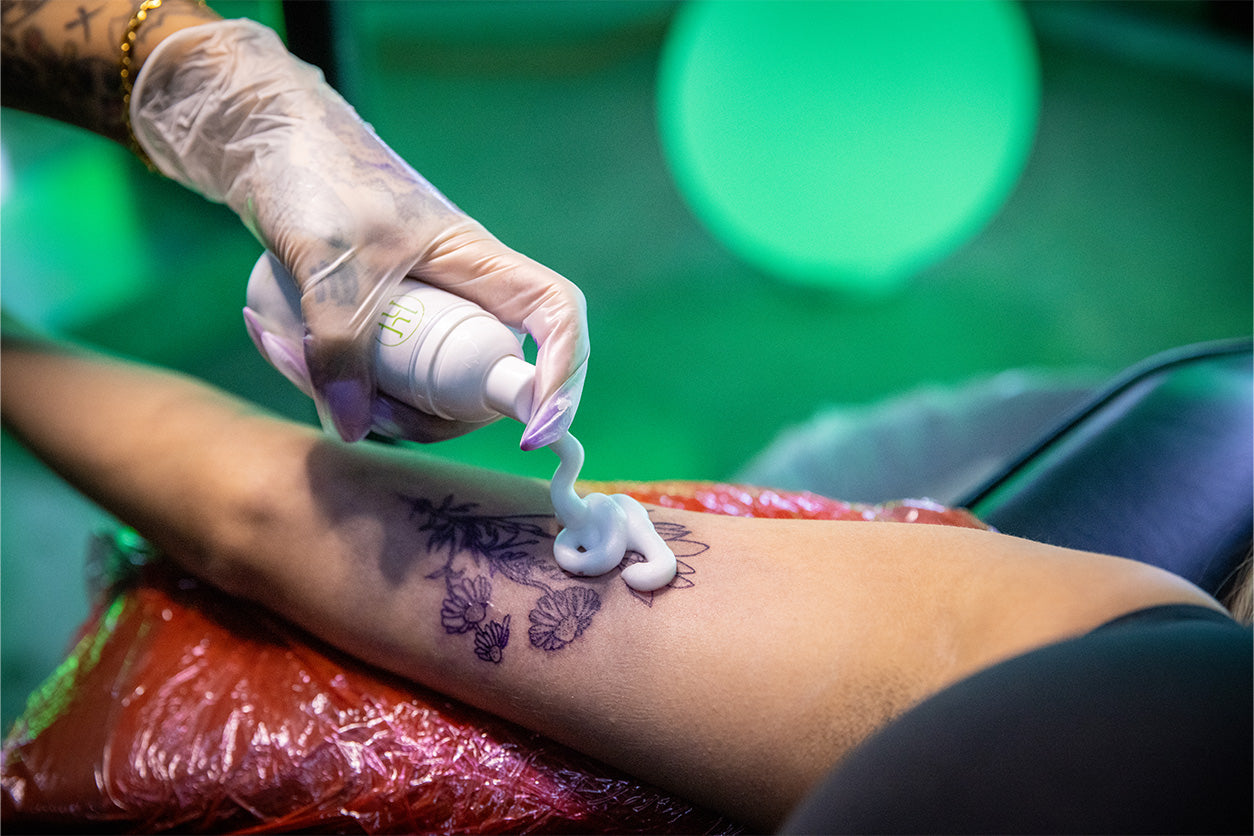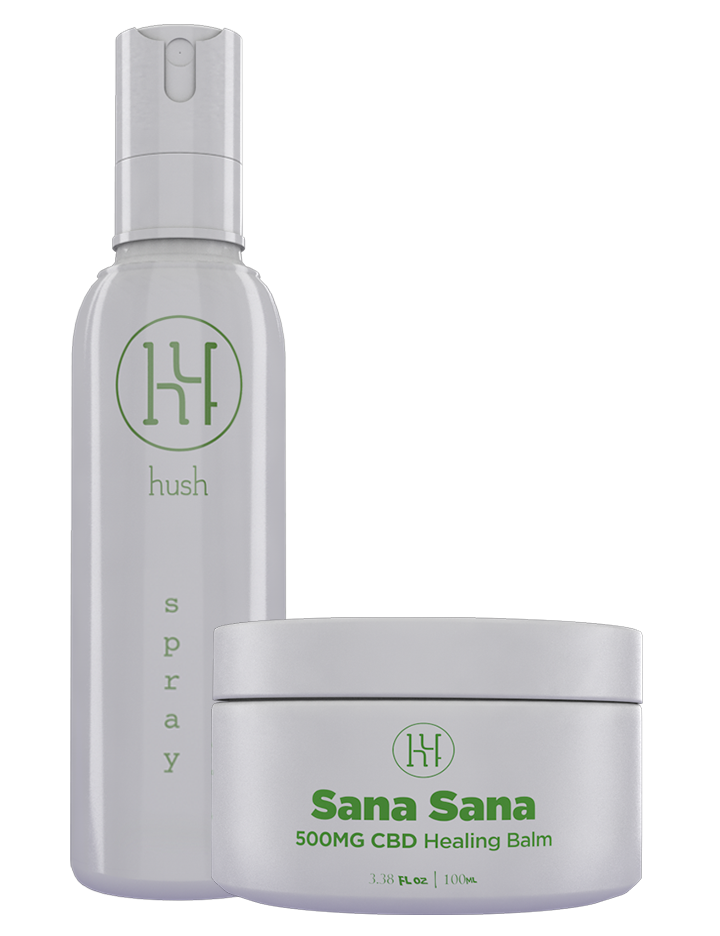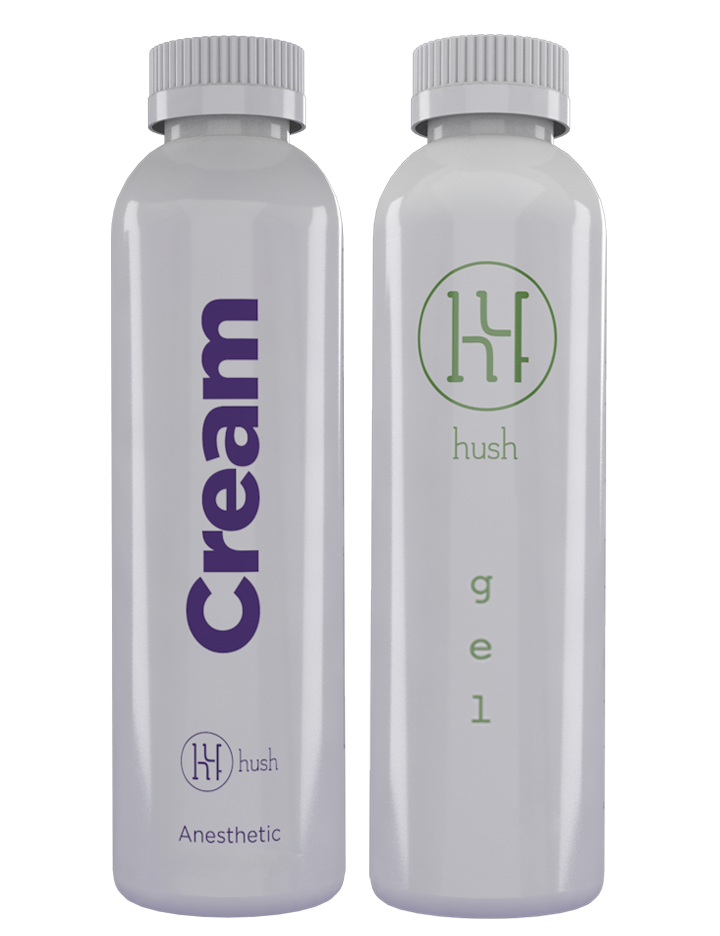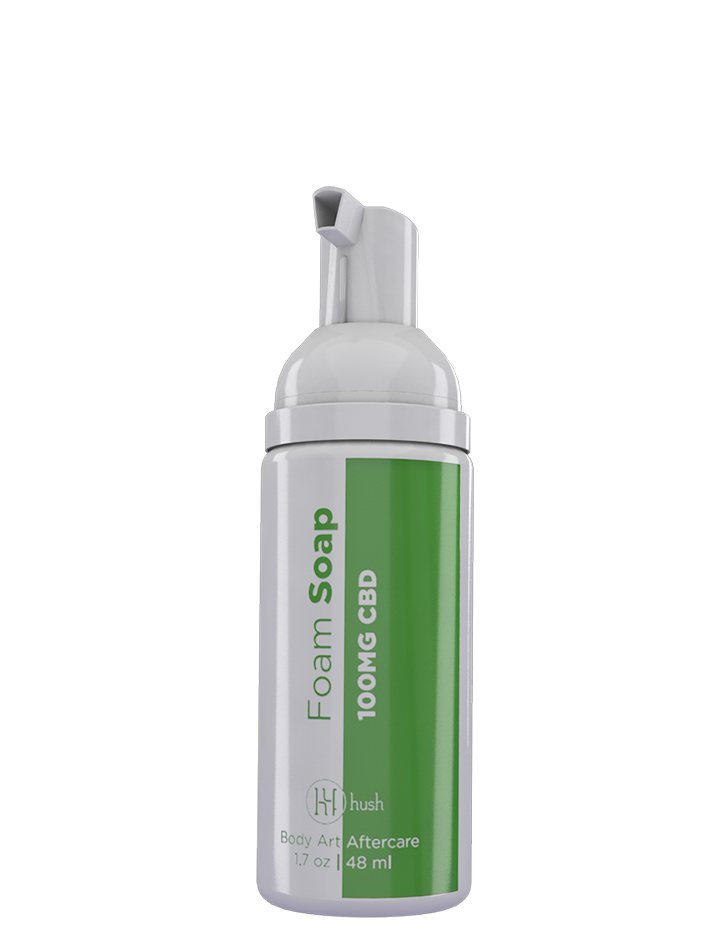Planning your next tattoo can be the most exciting part of the process. Whether it’s your first tattoo or one of many, the anticipation of a new piece of art is a thrill in itself.
It’s important not only to be confident in your tattoo design, but also to prepare for the tattoo healing process. Before stepping into the artist’s shop, do some research!
Find a trustworthy tattoo artist with reliable reviews. Make sure you’re prepared to take care of a healing tattoo. Most tattoos will require a good amount of attention to ensure a speedy healing process.
New tattoos with small designs often heal quickly with minimal care. Understanding that everyone’s body is different and might react differently to a new tattoo is essential (and totally okay).
Keep your eyes peeled for a wide range of reactions, from slight redness to blisters. Thankfully, no matter how your skin responds to your new ink, there are steps you can take to ensure that your fresh tattoo heals properly and looks great for years to come.
In tandem with the HUSH range of products, these steps can make the healing process a breeze!
What Causes a Tattoo Rash?

Many factors can influence your body’s reaction to a tattoo. For some people, a tattoo could heal perfectly with a simple routine of soap and moisturizer. For others, the process might be less straightforward.
A negative reaction can be hard to nail down if you don’t do your research. Before getting a tattoo, you should know what might cause a rash or other reaction. This research can help create a positive tattooing experience throughout the entire healing process.
A rash might come from an unqualified tattoo artist, a personal health issue, or a skin sensitivity. This is why it is vital to both find an artist you trust and understand your own body as much as possible before committing to a tattoo.
Allergies
Some people have preexisting allergies that can contribute to skin reactions from a tattoo. Many people might not even know they have an allergy until their skin is tattooed. An allergic reaction is the most common adverse reaction to getting a tattoo.
Common signs of a rash are redness, bumps, itchiness, or unusual swelling. These symptoms often appear within the first week of getting the new tattoo; however, a rash can show signs even months after. Red pigments are more likely to cause a rash than black or other colors.
Mild or moderate allergic reactions to tattoos affect only the area of the tattooed skin. Redness, swelling, raised scaly patches, bumps, and fluid are all signs that the skin is having an issue with the new ink.
Infection

Though surprisingly not as common as allergies, infection is another possible reaction to a new tattoo. An infection could have nothing to do with the individual’s skin and how it reacts to ink. Instead, an infection often comes as a result of unsanitary equipment and practices, or not following proper aftercare instructions.
Improper tattooing techniques can cause an infection, leaving the tattooed individual’s skin irritated or even scarred. Like an allergic reaction, an infection rash can appear days or weeks after the tattoo. Redness, heat, pain, excessive itchiness, bumps, and blisters are all signs of an infection.
An infection is often the fault of the tattoo artist or shop. Artists must comply with strict standards by the Occupational Safety and Health Association (OSHA) and the Center for Disease Control (CDC). These include rules for individual artists, such as using clean gloves and new needles for each client, and regulations for the shop, like properly disposing of waste materials like bloody paper towels.
Unsanitary tools can result in bacterial infections such as staph passing from client to client. Mycobacterial infections are often caused by contaminated ink. Anything that comes into contact with a client’s skin must be single-use and disposed of properly to avoid infections.
It’s also possible for infections to be the fault of the client — improper aftercare practices like exposing the fresh wound to curious lick-y pets or neglecting to incorporate a washing routine can significantly increase chances of an infection.
Other Pre-Existing Conditions
Similar to allergic reactions, a new tattoo can cause a rash due to a pre-existing skin condition. Sometimes the client might not even know they have a skin condition until they negatively react to a tattoo.
If you have eczema or psoriasis, these issues could become worse with a tattoo. Even though it's not guaranteed to happen, a new tattoo can cause a rash to show up in someone with a pre-existing skin condition.
Recognizing a Rash
How do you tell the difference between the typical tattoo healing process and a harmful rash? Recognizing the signs of a rash in contrast to general itchiness is essential for keeping your tattoo healthy.
For most people, tattoos will be slightly uncomfortable as the skin heals naturally. The first few days after being tattooed, the skin generally shows redness and feels a little warm to the touch. These are good signs that your body is healing!
As the skin heals, a scab will begin to form on the tattooed area. As this area dries out, it becomes itchy. Resist the itch!
This itchiness can easily be confused with a rash, but a little itchiness is a normal (albeit annoying) part of the tattoo healing process.
The tattooed skin will also feel raised. There is a difference between this and excessive swelling that affects the area surrounding the tattoo.
When in doubt, ask your artist! An experienced tattoo artist will be able to tell the difference between the normal healing process and a worrisome reaction.
How To Avoid a Tattoo Rash
Start With a Trusted Artist

When choosing what your next tattoo will look like, you will most definitely want to find an artist that is talented in your specific style. From American traditional to delicate thin lines, there are many beautiful ways to decorate yourself. Many artists are well-versed in multiple tattoo styles, but selecting an artist that caters mostly to the style you are looking for can be helpful.
Possibly the most vital step in preparing for your new tattoo is finding a trusted artist. There are many talented tattoo artists, but it is even more important to choose someone whose shop follows the cleanliness standards and regulations set by OSHA and the CDC.
When you find an artist you are interested in, go to a review website like Yelp or their Google Business page and read the reviews. It is helpful to know a shop’s professional credibility and read a variety of personal experiences from past clients.
You can even come into the shop and ask to see the equipment and tattooing area before getting a tattoo there if you are still unsure. Feel free to ask questions that give you peace of mind, like what their sanitization practices are and what kind of ink they use.
It’s your body, so pull all the punches!
Prioritize Aftercare
After you get the tattoo, the next step to preventing a rash is aftercare. The best action plan for a healing tattoo is to keep things simple. Most tattoo artists will give you something to cover your tattoo, such as plastic wrap or Saniderm.
Gently wash the tattoo daily with fragrance-free antibacterial soap and follow up with a fragrance-free moisturizer. Keeping the tattoo moisturized is especially important during the inevitable itchy stage of the healing process. Again, resist the itch.
Thankfully, HUSH has you covered when it comes to the essentials!
The Aftercare Set includes everything you need to keep your tattoo fresh: the CBD Healing Balm, Healing Spray, and CBD Foam Soap.

The CBD Foam Soap is a gentle formula that will keep your tattoo and surrounding skin clean as it heals. Start by pumping some of the foam directly on the tattoo. Softly rub the skin to create a lather, then rinse, and gently pat dry. Remember not to scrub, as the scabs are essential to healing! Natural botanicals and anti-inflammatory properties will also help reduce swelling and redness that can contribute to itchiness.
The HUSH CBD Healing Balm, containing 500mg of organic cannabinoids, regenerates the area’s skin cells. CBD extract naturally hydrates the skin and reduces swelling and redness. Shea butter is another main ingredient that utilizes fatty acids to moisturize healing skin.
Then, the lidocaine-based Healing Spray is especially helpful for protecting new tattoos against infection, using antiseptic agents. The fast-acting lidocaine formula relieves pain and itching quickly while protecting the skin underneath.
Rashes and reactions cannot always be avoided, but taking steps to care for your skin can set you up for a happy and healthy tattoo experience.
How To Relieve a Tattoo Rash

Even if you do everything correctly, you can still have a negative reaction to your new tattoo. But not to worry, there are lots of solutions at your fingertips!
The Hush Aftercare Set is a good place to start. Keeping the new tattoo and surrounding skin clean and moisturized can help with irritation and dryness.
If the rash is more severe, though, a cool compress is a quick solution to irritated skin. A cool compress will reduce swelling, pain, and redness temporarily. Placing a wrapped ice pack or a cold, wet towel on the skin can feel amazing on an angry tattoo!
Heal Tattoos Without Compromise
Of course, planning the style and placement of your next tattoo is an exciting time. The anticipation of a new design on your body is a thrill, whether it's your first tattoo or you’ve been adding to your collection for years. While these first steps are a lot of fun, it’s essential that you also prepare for the healing process, no matter what style of tattoo you plan to get.
Doing your research is the key to planning a new tattoo, and the first step is finding a tattoo artist or shop with a reliable track record. Using sites to find artists and the trusty ol’ internet to read reviews, you can find out who has the proper credentials and a history of pleased customers. This can help you feel confident that you are getting a tattoo from someone who takes the steps necessary for a safe tattooing experience.
Many tattoos heal over a couple of weeks with minimal upkeep and care, especially small and simple tattoos. However, every tattoo does require aftercare. Cleaning and moisturizing daily are vital for a tattoo to heal well and end up looking good!
It will also be important to know your own body and how your skin might respond to being tattooed. Allergies and skin conditions greatly affect the tattoo healing process, and a range of reactions and rashes could happen as a result. Everyone is different and that is a good thing — best to be prepared!
There are steps you can take before and after getting tattooed that can increase your chances of having an easy tattoo healing process. HUSH’s range of tattoo aftercare products can aid in keeping your new ink moisturized and clean throughout the process!
Sources:
Tattoos: 7 unexpected skin reactions | AAD




